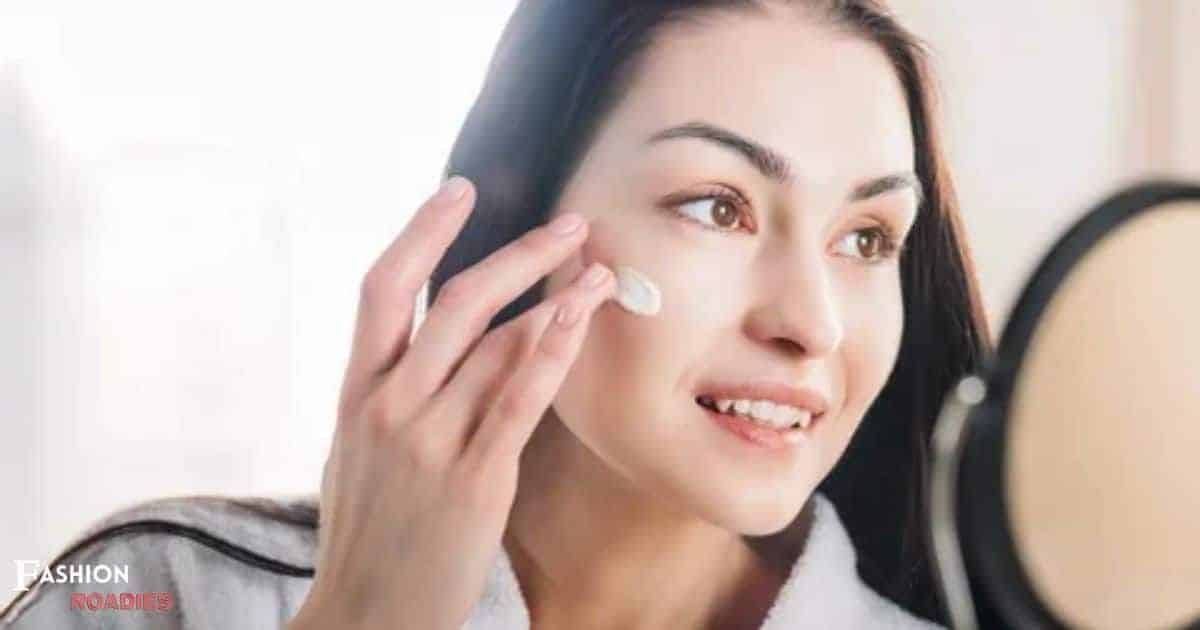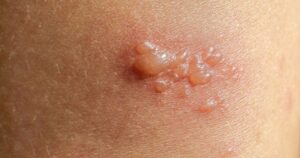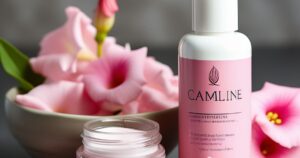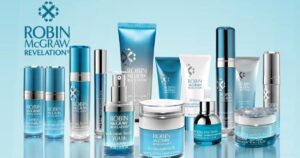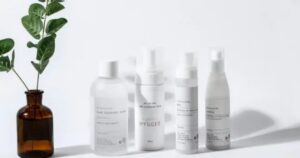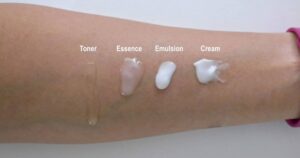Unlock the secret to radiant skin with our expert guide on how to apply skin care products. Like a symphony of nourishment, each step in your routine harmonizes to create a vibrant and youthful complexion. From the gentle embrace of a cleanser to the protective shield of sunscreen, we will navigate you through the intricate steps with finesse and precision. Join us on this transformative journey as we unveil the art of skincare application, ensuring you find your rightful place in the realm of beauty.
Key Takeaways
- Choose a cleanser suitable for your skin type and cleanse your skin twice a day to effectively remove dirt and impurities, unclog pores, and prevent breakouts.
- Use a toner to balance the skin’s pH levels, tighten pores, remove remaining impurities, and prepare the skin for the next steps in your skincare routine.
- Incorporate a serum into your skincare routine to provide targeted treatment and nourishment, boost hydration, address specific skin concerns, and enhance the effects of other products.
- Include a spot treatment in your routine to address specific concerns such as acne, dark spots, or fine lines without affecting the rest of the skin, and to provide faster results with concentrated ingredients.
Step 1: Cleanser
To effectively remove dirt and impurities from the skin, it is essential to cleanse using a gentle, foaming cleanser, ensuring that all makeup and residue are washed away. Cleansing is the first and most crucial step in any skincare routine. It helps to unclog pores, remove excess oil, and prevent breakouts. A gentle, foaming cleanser is recommended as it effectively removes dirt without stripping the skin of its natural oils. When choosing a cleanser, opt for one that is suitable for your skin type. For example, if you have oily skin, look for a cleanser that contains ingredients like salicylic acid or tea tree oil to control excess oil production. If you have dry skin, choose a cleanser that is hydrating and moisturizing. Cleansing should be done twice a day, morning and evening, to keep the skin clean and healthy.
Step 2: Toner
Applying a toner after cleansing helps to balance the skin’s pH levels and tighten pores, creating a smooth and radiant complexion. Toners are an essential part of any skincare routine as they not only remove any remaining impurities but also prepare the skin for the next steps. Toners work by restoring the skin’s natural pH, which can be disrupted by cleansers that tend to be more alkaline. By bringing the pH back to its optimal level, toners help to maintain the skin’s barrier function and prevent it from becoming dry or irritated. Additionally, toners can help to tighten the appearance of pores, making them appear smaller and less noticeable. This creates a more refined and even skin texture. To apply a toner, simply pour a small amount onto a cotton pad and gently swipe it over the face and neck. Allow it to dry before moving on to the next step in your skincare routine.
Step 3: Serum
A small amount of serum should be applied to the face and neck after toning to provide targeted treatment and nourishment to the skin. Serums are lightweight formulations that contain a high concentration of active ingredients, such as vitamins, antioxidants, and peptides, that penetrate deeply into the skin to address specific skin concerns. Here are some reasons why adding a serum to your skincare routine can be beneficial:
- Boosts hydration: Serums are packed with humectants that draw moisture into the skin, leaving it plump and hydrated.
- Targets specific concerns: Serums are formulated to address specific skin issues like wrinkles, hyperpigmentation, or acne, providing targeted treatment.
- Enhances overall results: By incorporating a serum into your skincare routine, you can amplify the effects of other products, such as moisturizers or sunscreen, for a more comprehensive approach to skincare.
Including a serum in your skincare regimen can help you achieve healthier, more radiant skin.
Step 4: Spot Treatment
How can spot treatment be incorporated into a skincare routine, and what are its benefits? Spot treatment refers to the application of targeted skincare products on specific areas of the face or body to address specific concerns, such as acne, dark spots, or fine lines. Incorporating spot treatment into your skincare routine can provide several benefits. Firstly, it allows you to address specific concerns without affecting the rest of your skin. This targeted approach can be more effective in treating stubborn issues like acne breakouts. Secondly, spot treatments are often formulated with concentrated ingredients that can deliver faster results. By applying these products directly to problem areas, you can expect to see improvements more quickly. Lastly, spot treatments can be used as preventive measures to target early signs of skin concerns before they become more pronounced. By incorporating spot treatment into your skincare routine, you can effectively address specific concerns and maintain a healthy complexion.
Step 5: Eye Cream
There are several key benefits to incorporating eye cream into your skincare routine, such as reducing the appearance of fine lines and wrinkles, improving hydration, and minimizing dark circles. Eye creams are specifically formulated to target the delicate skin around the eyes, which is prone to dryness and signs of aging. By using an eye cream regularly, you can nourish and protect this sensitive area, resulting in a more youthful and refreshed appearance.
- Decreases puffiness and under-eye bags, giving a well-rested look.
- Brightens and firms the skin, enhancing the overall radiance of your face.
- Helps to prevent future signs of aging, allowing you to maintain a youthful appearance.
Incorporating an eye cream into your skincare routine can be a simple yet effective step towards achieving healthier and more vibrant skin. By taking care of your eyes, you are taking care of yourself and ensuring that you look and feel your best.
Step 6: Moisturizer
I recommend incorporating a moisturizer into your skincare routine to provide essential hydration and nourishment for your skin. Moisturizers are an important step in maintaining healthy and radiant skin. They work by sealing in moisture and preventing water loss, which helps to keep your skin hydrated and supple. Additionally, moisturizers contain ingredients that can help to nourish and protect your skin, such as antioxidants and vitamins. When choosing a moisturizer, it is important to consider your skin type and specific skin concerns. Look for a moisturizer that is suitable for your skin type, whether it is dry, oily, or combination. It is also beneficial to select a moisturizer that addresses your specific concerns, such as anti-aging or acne-fighting properties. By incorporating a moisturizer into your skincare routine, you can provide your skin with the hydration and nourishment it needs to stay healthy and glowing. Now, let’s move on to the next step: sunscreen.
Step 7: Sunscreen
To effectively protect your skin from the harmful effects of sun exposure, it is crucial to apply skin care products sunscreen with SPF 30 or higher both before and during outdoor activities. Sunscreen acts as a barrier that absorbs or reflects harmful ultraviolet (UV) rays, preventing them from penetrating the skin. Here are three reasons why sunscreen is essential for maintaining healthy skin:
- Prevents skin damage: Sunscreen shields the skin from UVA and UVB rays, which can cause sunburn, premature aging, and an increased risk of skin cancer.
- Maintains skin health: By reducing the amount of UV radiation reaching the skin, sunscreen helps to maintain the skin’s overall health and appearance.
- Promotes confidence: Protecting your skin with sunscreen allows you to enjoy outdoor activities without worrying about sunburn or skin damage, boosting your confidence and sense of belonging.
Frequently Asked Questions
How Often Should I Exfoliate My Skin and at Which Step of the Skincare Routine?
Exfoliating the skin is an important step in a skincare routine. It helps remove dead skin cells and promote cell turnover. The frequency of exfoliation depends on your skin type, but generally, once or twice a week is sufficient.
Can I Skip the Toner Step if I Have Dry or Sensitive Skin?
Skipping the toner step may be suitable for individuals with dry or sensitive skin. However, it is important to consult with a dermatologist or skincare specialist to determine the best course of action for your specific skin type and concerns.
Are There Any Specific Ingredients I Should Look for in a Serum for Anti-Aging Purposes?
When looking for a serum for anti-aging purposes, it is important to consider specific ingredients. Ingredients such as retinol, hyaluronic acid, vitamin C, and peptides are often recommended for their ability to reduce the signs of aging and promote youthful-looking skin.
Is Spot Treatment Only Necessary for Acne-Prone Skin or Can It Be Used for Other Skin Concerns?
Spot treatment is not only necessary for acne-prone skin but can also be used for other skin concerns. It allows targeted treatment of specific areas, effectively addressing various issues such as dark spots, blemishes, and redness.
What Is the Recommended Amount of Eye Cream to Use and How Should It Be Applied?
The recommended amount of eye cream to use and how it should be applied depends on the specific product and the individual’s needs. It is best to follow the instructions provided by the manufacturer for optimal results.
Conclusion
In conclusion, following a proper skincare routine is essential for maintaining healthy and radiant skin. By diligently applying cleanser, toner, serum, spot treatment, eye cream, moisturizer, and sunscreen in the correct order, you can effectively nourish and protect your skin from various environmental stressors. Remember, consistency and patience are key to achieving the desired results. So, invest in your skin and enjoy the benefits of a well-cared-for complexion.
